Plants and Animals Are Dying for a Drink
Four Years of Extreme Drought Taking Big Tolls
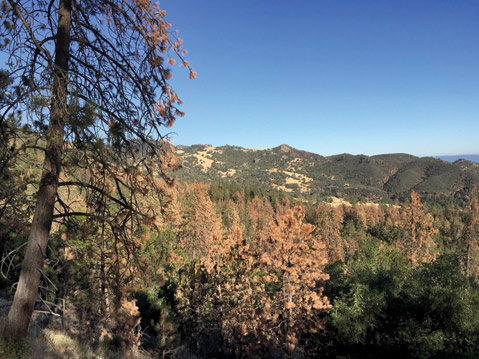
Death in Santa Barbara’s natural world is typically swift and violent — mountain lions pounce on deer, hawks snatch up snakes, frogs gulp down dragonflies. Even plants have their dramas.
That’s changing — slowly and sometimes imperceptibly, but it is.
After more than four years of record-breaking drought — intensified by rising temperatures and shifting weather patterns — the living things along our coast and in our mountains are gradually fading quietly away: through starvation, abandonment, and deadly thirst.
The bodies of emaciated foxes are turning up on San Miguel Island, malnourished crows are falling all over the county, and the forests are littered with millions of dead trees. Once we look past our water bills, a muddy Lake Cachuma, and bureaucratic wrangling over desalination plants, we see evidence of ecological impact all around.
Most of the effects aren’t instant or catastrophic. Instead, they’re cumulative and evolving, hitting critters as ordinary as squirrels and as rare as tiger salamanders.
Evidence, both anecdotal and scientific, reveals a system out of whack. Santa Barbara hikers tell of empty creeks and fields of wilting wildflowers, while area scientists use words like “severe,” “alarming,” and “unprecedented.” City managers are watching urban forests bend under the heat; county officials fear the next wildfire.
Paul Collins has worked at the Santa Barbara Museum of Natural History for 42 years. As its curator of vertebrate zoology, he’s seen droughts come and go. “This one is drier,” he said with conviction. “Grasslands are really burned. Animal populations are getting hammered. This is certainly an extreme event.”
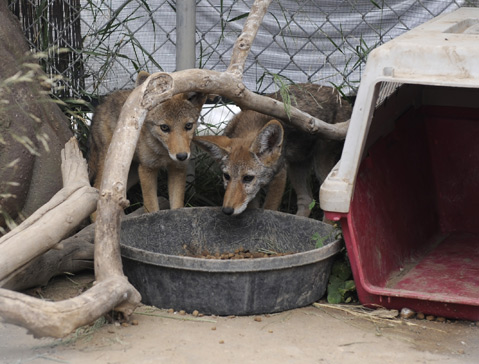
Nowhere to Run
You don’t have to go far to acquaint yourself with the evidence. Along Loma Alta Drive, look across the city, and you’ll notice dozens of dead pine trees poking through the green like fire torches. Keep heading uphill to La Mesa Park, and you can meet its new resident: a young coyote. It arrived in town skinny and edgy. It’s now plump and surprisingly bold, trotting along playground paths in the middle of the day. One Mesa resident admits she feeds the outsider raw chicken. “He loves it,” she said.
Less than a mile away, a whole family of coyotes wanders between Elings Park and Honda Valley Park next to Miramonte Drive. Their yips and yowls bounce along the corridor every few nights, startling neighbors — including this reporter — who’ve lived in the area for years and never heard such sounds. “Carnivores are learning there’s good stuff to be had, like cats, dogs, and pet food,” said Collins. “Once you get a group moving to a semi-urban area and they mate and have young, they become urban coyotes.”
Collins, always measured and hardly an alarmist, has been logging the calls he receives about wildlife encounters. The list keeps growing. “People are seeing things they’ve never seen before,” he said, like bobcats in their backyards. He also has records of mountain lions on the Mesa and in Hope Ranch. Farther outside the city, key wetlands that normally support an abundance of life are dry as a bone, and that loss of habitat is contributing to the invasion.
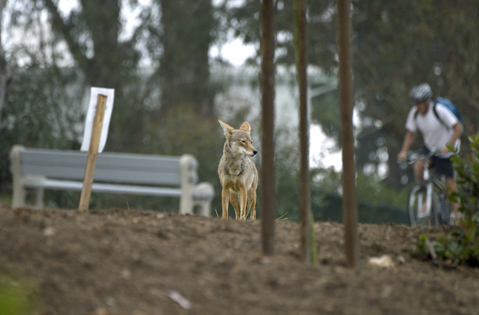
Perhaps less visibly, the drought is taking a toll on the building blocks of the food chain. Without rain, plants are producing fewer seeds and roots for little herbivores such as mice, moles, and rabbits to nibble on. Insect populations have thinned out, and many pollinators such as bees and beetles are now in a sort of hibernation until the rains return.
Some animals will stop breeding because they don’t have the necessary energy. When that happens, whole populations of unique subspecies can disappear. That’s a real possibility for a colony of chipmunks that lives atop Mount Pinos and is in danger of “blinking out,” forever altering that ecosystem. The same goes for the giant kangaroo rat in the Carrizo Plain, where thousands of acres of grassland have turned to desert. White-tailed kites, with fewer voles and other rodents to hunt, are starting to reproduce less often. And egg clutches of other birds are shrinking, as well. A chick will be pushed out of its nest if there’s not enough food to go around.
The Santa Barbara Wildlife Care Network — which, in an average year, takes in a little more than 3,000 sick and injured animals, mostly birds, reptiles, and small mammals — has already rescued 300 more than usual. “We’re seeing an increase in songbirds and a huge numbers of crows,” said Julia Parker, the organization’s director of animal affairs. “We call them ‘teacup crows’ because they’re so tiny and underfed.” Insectivores, like scrub jays and woodpeckers, are now common patients at their facility, as well as a number of cormorants that recently came in “emaciated.”
The Animal Rescue Team in Solvang has also broken its record, said executive director Julia Di Sieno last week, for taking in bobcats, foxes, badgers, squirrels, deer, mice, bats, skunks, buzzards, and more. “Right now, I have 12 orphan coyote puppies. I’ve never had that many,” she said. “In my heart of hearts, I know it’s connected to the drought. These animals coming into neighborhoods are desperate.” She reminded anyone with pets, especially chickens or rabbits, to keep them safe at night.
The California Roadkill Observation System says more deer were hit in 2014 than last year, and the California Department of Transportation says it’s seeing an extremely high number of collisions between cars and wildlife as animals are forced to cross into traffic, searching for green grass.
But the fauna that can’t just get up and move — such as federally endangered steelhead trout, tidewater gobies, and three-spined sticklebacks — along with similarly threatened species of amphibians dependent on constant water — such as the arroyo toad, red-legged frog, and tiger salamander — are in especially dire straits. Many of the tributaries along the Gaviota Coast have dried up, forcing remaining populations to either cannibalize themselves or cram into smaller and smaller areas. That makes them easy pickings for predators, said U.S. Fish & Wildlife biologist Chris Dellith. “It’s like shooting fish in a barrel.”
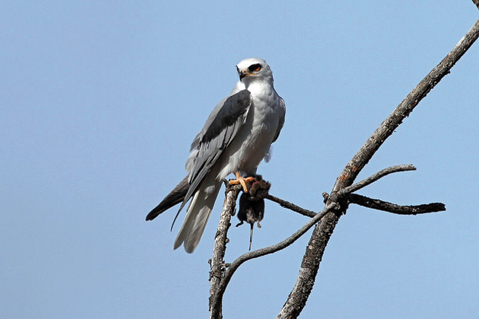
Sea Change on Land
To see what’s happening in the wilds, head to Paradise Road. There, you’ll be greeted by line after line of desiccated oaks. On the north side of Figueroa Mountain, you’ll see entire stands of dead fir and pine glow orange like New England foliage in the fall.
Last month, the California State Board of Forestry and Fire Protection announced approximately 12.5 million dead trees now blanket Southern California. In 2014 alone, an estimated 3.3 million trees died, nearly double 2013 mortality rates. As a result, the board announced it’s adopting emergency regulations so landowners can cut down dead and dying trees without having to go through the time-consuming process of applying for removal permits.
“The drought is having compounding effects on the landscape,” said board director George Gentry. These emergency regulations are aimed to allow people to protect their homes and land this summer from catastrophic wildfires and hazardous falling trees.”
According to CalFire, 2,313 wildfires burned through the state between January 1 and July 4 last year. During the same time interval this year, there were 3,129. Andrew Madsen, a spokesperson for the U.S. Forest Service, said he’s surprised how many visitors to Los Padres National Forest were unaware prior to their trip how dry and dangerous the conditions are: “We get a lot of questions from folks who’ve been hiking and camping about all the dead trees.” Madsen said Forest Service crews have had to work harder and longer to clear fallen trees from fuel breaks, but with moisture levels so low, “even a green tree can still easily burn.”
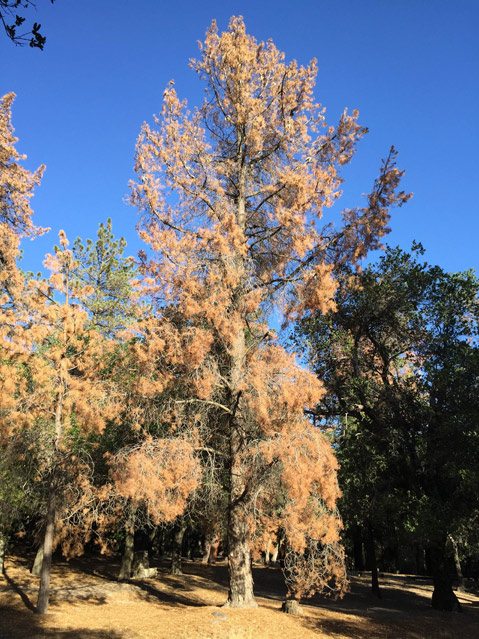
Every two weeks, Tom Himmelrich, a vegetation management captain with the Santa Barbara County Fire Department, takes fuel moisture samples from Tepesquet, Harris Grade, Cachuma, Refugio, and West Gaviota. He tests chamise, an evergreen chaparral shrub that’s a good indicator of overall dryness. Anything at 60 percent or more means it’s dry and ready to burn, especially with low humidity or wind. The average fuel moisture at the end of June was 61 percent and dropping. Out in the field, Himmelrich said the difference is obvious. More of the brush is dying sooner, especially the shallow-rooted manzanita bushes.
UCSB ecology professor Carla D’Antonio has been studying chaparral for three years near Painted Cave. While the plants are well adapted to such extreme conditions and can bounce back with just a little rain or fog, she explained, they’ve lost a lot of leaves, which bakes the ground under them even more. “Some of our readings show the plants are more stressed than anything we’ve seen in the literature,” she said. “It’s remarkable that they’re still alive.”
Other vegetation, less perfectly resilient to such atypical weather, is losing its battles against the sun. The conifers and oaks that have died and turned to kindling likely suffered one of two fates.
One possibility is that the arid soil shut down their plumbing, so they stopped photosynthesizing and starved to death; embolisms formed in the trees’ long siphons that run from their roots to their branches, and the whole system lost pressure. That’s why plants wilt.
The other is that the trees — parched, weakened, and unable to muster defenses against ever-present pests — succumbed to bark beetles. Normally physically pushed back by oozing sap created by a tree when it’s healthy, the swarming destroyers burrow in and lay larvae that feed on living wood. Bark beetles proliferate in warm weather and send signals to others of their kind when the getting’s good. Other types of insects, including spruce budworms, and a whole range of different fungi similarly attack a tree when it’s vulnerable.
UCSB Bren School professors Naomi Tague and Frank Davis study large tree die-offs and find exactly what did the killing. There’s been a 10 percent mortality rate — as opposed to the normal 1-2 percent — in some areas of the western U.S. “Every year, a few trees will die,” said Tague. “That’s okay. That’s natural selection. But when it’s been a few years of massive die-offs, you really start to see it.” Davis said what’s happening now is “unprecedented in terms of modern records.” He pointed to aerial survey photos that show “hot spots” of dieback in the region and explained that the phenomenon is so unusual he hopes the results of such studies will help resource managers come up with better ways to predict the impacts of climate change on forests.
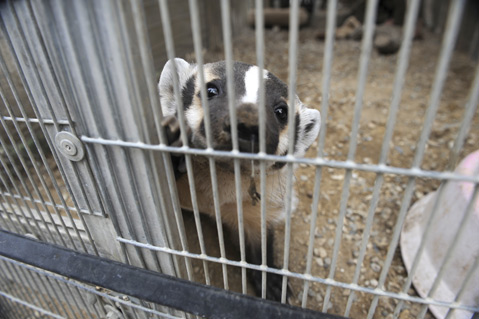
As bigger areas of longstanding trees disappear, it becomes harder for seedlings to replant themselves. “Along Rattlesnake Trail, there are ponderosa pines that are looking really sad,” said Tague. “If they died, I don’t know if they would come back.”
Forests are an iconic part of America’s heritage and aesthetic value. They support huge parts of the country’s economy, from logging to recreation. And they need proper management to survive. There’s been a lot of fuel suppression in some landscapes, but controlled burns should be allowed to happen, Tague argued. “When they’re doing a controlled burn in Sequoia National Park and it’s smoky, they’re not doing that to annoy you,” she said.
In terms of Los Padres recreation, hunter Anthony Prieto said pigs, deer, and other thirsty game have concentrated on private land where there are wells and troughs, which is off-limits to most hunting. Without ground moisture, animal prints don’t stick, and tracking becomes near impossible. Fire threats turn even target practice into risky business. And the whole hunting experience becomes miserable with the sun beating on your neck and the dust swirling down your throat. “That’s why I go to Montana,” said Prieto.
Seasoned hiker and backpacker Bryan Conant of the Los Padres Forest Association said he discourages visitors from exploring the southern areas of the forest. It’s just too hot and dry. “Springs that I thought would never dry up are now dried out,” he said. “When it’s 95 degrees and there’s not a lot of water, it’s not a lot of fun.” Hurricane Deck is especially unforgiving right now.
As the mountains and their users weather these new realities, plants and animals on the Channel Islands are also trying to cope. Denise Knapp, an ecologist at the Santa Barbara Botanic Garden, talked about dead stands of bishop pines on Santa Cruz Island that normally support endemic scrub jays. “It’s frightening,” she said. Alligator lizards have also started to decline on San Miguel and Anacapa islands.
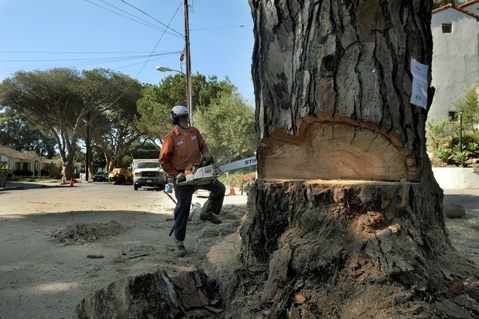
Lost Investments
For many Santa Barbara city residents, the death last fall of four historic stone pines along Anapamu Street was the wake-up call that the drought wasn’t just a worry for water district managers. The remaining pines are now being kept alive with a slow-release irricade watering system originally developed in Australia.
Parks and Rec’s Jill Zachary said Santa Barbara, with its extremely tight water budget, has been forced to decide which vegetation to save and what areas to let die. Patches of grass that see “active adult recreation,” such as Dwight Murphy Field and the Cabrillo Ballfield, still get watered, though with non-potable water, which causes salt buildup. Other spaces, like Shoreline Park, are completely left alone.
The city has altogether stopped making landscape improvements. When ornamental plantings, such as the floral gateway from Calle César Chávez to Chase Palm Park, die off, they’re replaced with mulch. “Parks are looking much more basic these days,” said Zachary.
Santa Barbara has an inventory of approximately 50,000 trees. Many of them in Alameda, Orpet, and Plaza de Vera Cruz parks were planted in the 1920s to diversify our urban forest. In a recent survey of California cities, Santa Barbara ranked number one in diversity with more than 450 different species. On average, it loses around 100-150 a year with an express goal of planting a new tree every time one dies. Now, the city is losing around 250-300 trees a year, and it has suspended its replanting program. “We’re in decline mode,” explained city arborist Tim Downey.
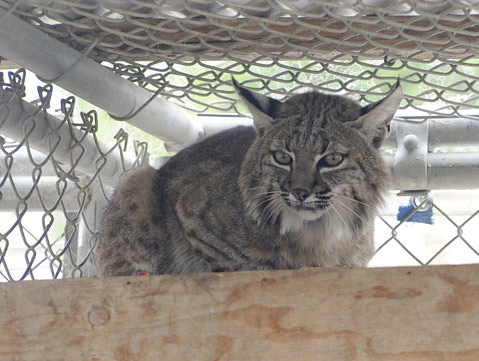
He said his staff is constantly toiling to diagnose, observe, and save stressed trees, and they’re training other department employees to be on the lookout for signs of danger. That includes wilting, leaves not appearing in the spring, and increased fruit production. When a tree thinks it’s on its way out, it’ll produce copious amounts of especially tasty fruit to ensure its genetic survival.
Downey cautioned residents against hasty action when a tree looks troubled. “Once the chainsaw starts, there’s no going back,” he said. One way to be sure a tree is dead is to wait and see what it does. A lot of deciduous trees won’t produce leaves during a drought. And some trees that are evergreen here because of our temperate climate are deciduous in other parts of the world, so losing their leaves is okay. They’ll grow back. “We live in a desert,” Downey said, “but people don’t believe it.”
The redwood grove in Goleta’s Stow Grove Park is in poor shape. More than a dozen of the giants have already been chopped down. Rosemarie Gaglione, Goleta’s public works director, said the city is doing all it can to save the historic redwoods — planted around the time the Stow House was built in 1872 — but it’s difficult because they’re not native to the area and are meant to live in cool, foggy climates. Water may be trucked in to keep some of the trees alive.
Gaglione’s biggest concern is Lake Los Carneros. Without rain to fill it from above or a high enough water table to recharge it from below, the lake is in danger of becoming too shallow to support migratory birds. “If it gets stagnant, they might not come back,” she said. Goleta can’t simply refill the lake with recycled water because it’s unlined and sits atop an aquifer. And aerating won’t work if levels fall too low, Gaglione said. “That just churns things up.”
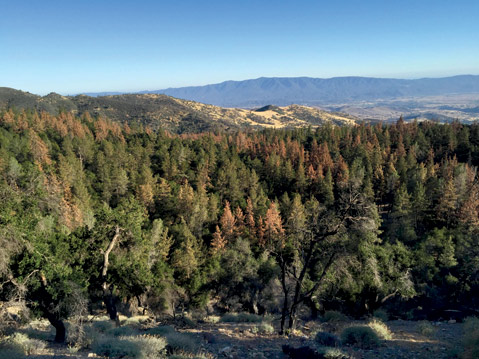
On the Horizon
It’s a very safe bet that heavy El Niño rains will descend on California in the next four to five months. Last Thursday, the National Oceanic and Atmospheric Administration’s Climate Prediction Center announced a “greater than 90 percent” chance that El Niño conditions that began this March — a warming Pacific Ocean and shifting trade winds — will remain through the winter. Scientists are even saying that storms could rival the deluge of 1997-1998.
While a good soaking will provide huge relief for the state’s reservoirs, it won’t completely undo all the damage rendered by the dry spell. Assuming they pack a wallop, storms will have to be cold enough to fill out the Sierra snowpack, and rain will have to come gradually and consistently so it penetrates the baked terrain instead of just running off in flash floods. Even then, the deficit will linger. Over-pumped groundwater could take 10 years or more to replenish.
Nevertheless, the news is good. If weather and ocean patterns hold, Santa Barbara is in for sweet relief over the winter holidays and the beginnings of a restored natural balance. The living things that inhabit our parks, hills, and backcountry will just have to hold on until then as the drought is expected to intensify through the rest of the summer into the fall. How they’ll fare the next time the state dries up when the air is even warmer is hard to say but important to consider. As Tague put it, “What we really should worry about are future droughts.”



